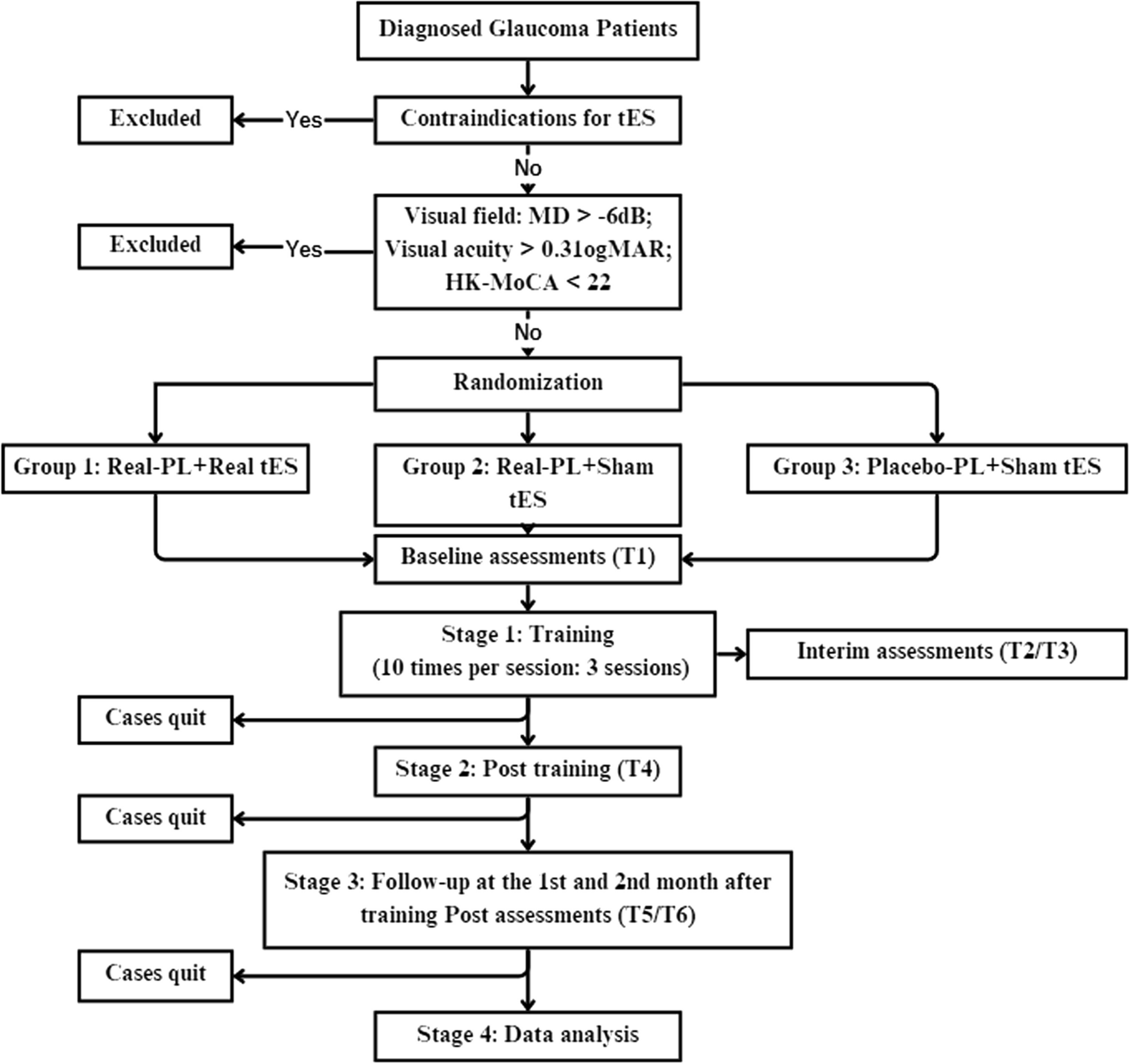GREAT: Pioneering Vision Rehabilitation for Glaucoma Patients

Introduction
Glaucoma patients often face irreversible visual field loss, which can lead to decreased quality of life, impaired mobility, and mental health challenges.
Study Overview
- Project Name: Glaucoma Rehabilitation using ElectricAI Transcranial Stimulation (GREAT)
- Objective: Investigate the combined effect of perceptual learning (PL) and transcranial electrical stimulation (tES).
- Design: A three-arm, double-blind, randomized controlled trial.
Methodology
Participants will be randomly allocated to one of three groups:
- Real PL and real tES
- Real PL and sham tES
- Placebo PL and sham tES
Each participant will engage in 10 sessions, each lasting about one hour, across three blocks.
Assessment Outcomes
The primary outcome is the mean deviation of the 24-2 visual field, measured with the Humphrey visual field analyzer. Secondary outcomes include:
- Detection rate in the suprathreshold visual field
- Balance and gait functions
- Electrophysiological and biological responses
Conclusion
This pioneering study represents the first attempt to evaluate the effectiveness of combining PL and tES for vision rehabilitation in glaucoma patients. The findings are expected to offer critical insights into their impacts on brain function and overall quality of life, potentially transforming rehabilitation approaches for glaucoma.
This article was prepared using information from open sources in accordance with the principles of Ethical Policy. The editorial team is not responsible for absolute accuracy, as it relies on data from the sources referenced.